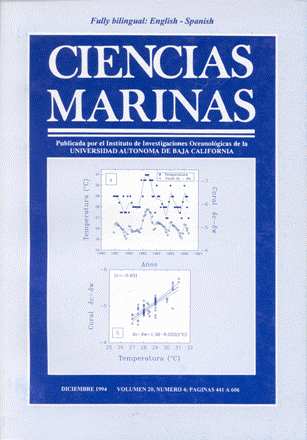18O Fractionation in the coralline aragonite of Porites lobata: Implications in oceanic paleothermometry studies
Main Article Content
Abstract
This study is fundamentally focused on a simple, but relatively unpondered problem: the coral δ18O temperature sensitivity (dδ/dT). Previous paleotemperature studies of corals have involved the use of either: 1) the calcite’s δ18O temperature sensitivity for mollusks (Epstein et al., 1953) or 2) the slope value (Δδ/ΔT) obtained by comparing annual temperature extrema versus annual δ18O extrema in the annual growth bands of coral skeletons. Because both perspectives involve the use of different values for the thermal sensitivity of the coral skeleton, significant discrepancies may be obtained while reconstructing oceanic paleotemperatures. In order to solve this problem, a field calibration was conducted by comparing the δ18O composition of coral skeletons of Porites lobata with sea surface temperature (SST). A paleotemperature equation for P. lobata was determined by comparing the sclerochronologicaly determined monthly skeletal δ18O values with monthly SST values for the Costa Rican coast. Additionally, when δw effects were considered in the coral skeletons, it was found that Porites yields a temperature dependent 18O isotopic fractionation between 0.222 and 0.235‰/ºC. This study reveals that the thermal sensitivity of the coralline aragonite is slightly larger than that for mollusk’s calcite. Therefore, future oceanic paleotemperature applications that involve corals should avoid the use of the thermal sensitivity of the δ18O of biogenic calcite, as has been done in the past. The use of the slope value proposed here may also eliminate the common problem of the seasonal ΔTºC not matching the Δ(δc-δw) observed in the coral skeletons.
Downloads
Article Details
This is an open access article distributed under a Creative Commons Attribution 4.0 License, which allows you to share and adapt the work, as long as you give appropriate credit to the original author(s) and the source, provide a link to the Creative Commons license, and indicate if changes were made. Figures, tables and other elements in the article are included in the article’s CC BY 4.0 license, unless otherwise indicated. The journal title is protected by copyrights and not subject to this license. Full license deed can be viewed here.

